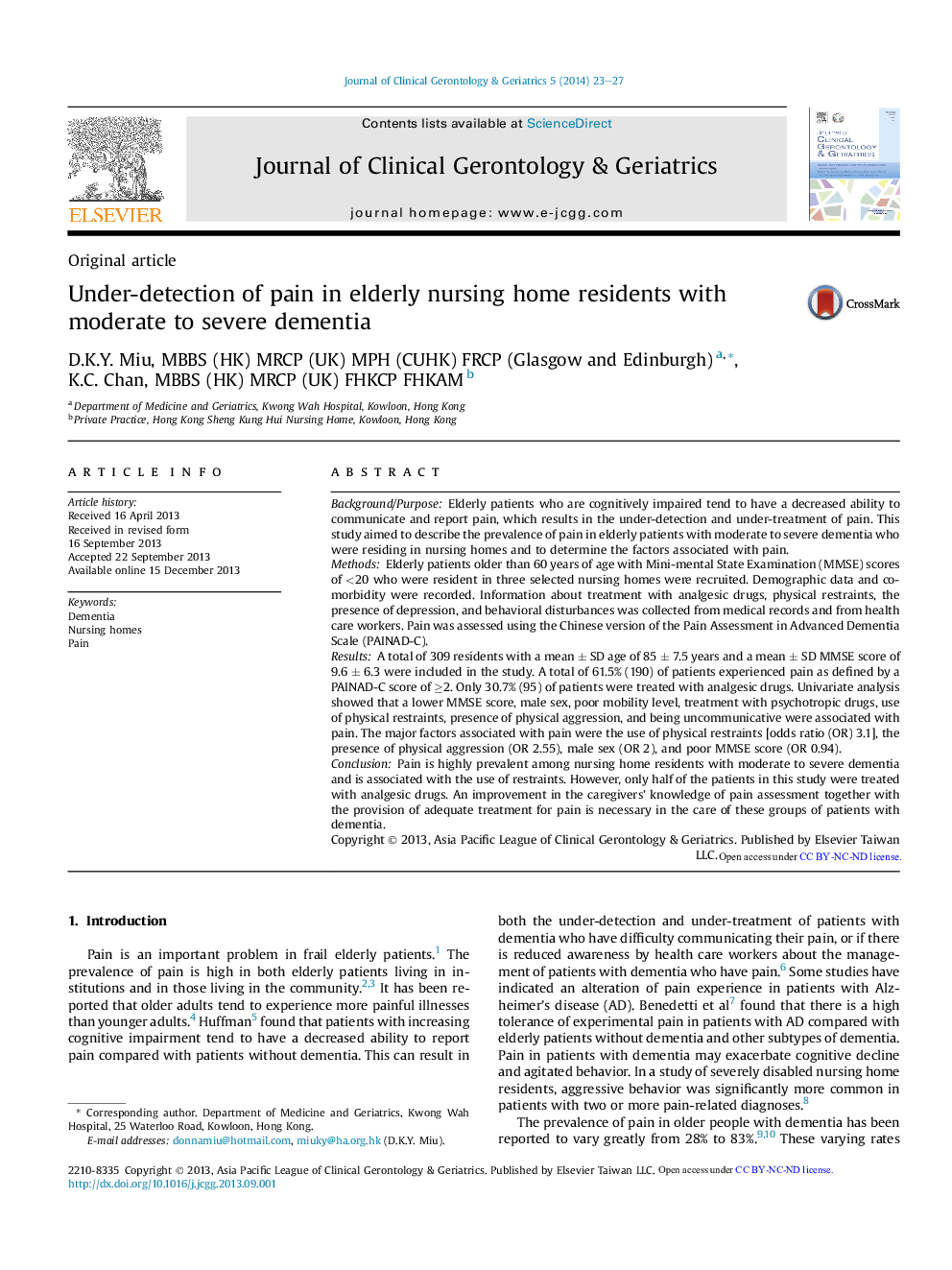| Article ID | Journal | Published Year | Pages | File Type |
|---|---|---|---|---|
| 3325790 | Journal of Clinical Gerontology and Geriatrics | 2014 | 5 Pages |
Background/PurposeElderly patients who are cognitively impaired tend to have a decreased ability to communicate and report pain, which results in the under-detection and under-treatment of pain. This study aimed to describe the prevalence of pain in elderly patients with moderate to severe dementia who were residing in nursing homes and to determine the factors associated with pain.MethodsElderly patients older than 60 years of age with Mini-mental State Examination (MMSE) scores of <20 who were resident in three selected nursing homes were recruited. Demographic data and comorbidity were recorded. Information about treatment with analgesic drugs, physical restraints, the presence of depression, and behavioral disturbances was collected from medical records and from health care workers. Pain was assessed using the Chinese version of the Pain Assessment in Advanced Dementia Scale (PAINAD-C).ResultsA total of 309 residents with a mean ± SD age of 85 ± 7.5 years and a mean ± SD MMSE score of 9.6 ± 6.3 were included in the study. A total of 61.5% (190) of patients experienced pain as defined by a PAINAD-C score of ≥2. Only 30.7% (95) of patients were treated with analgesic drugs. Univariate analysis showed that a lower MMSE score, male sex, poor mobility level, treatment with psychotropic drugs, use of physical restraints, presence of physical aggression, and being uncommunicative were associated with pain. The major factors associated with pain were the use of physical restraints [odds ratio (OR) 3.1], the presence of physical aggression (OR 2.55), male sex (OR 2), and poor MMSE score (OR 0.94).ConclusionPain is highly prevalent among nursing home residents with moderate to severe dementia and is associated with the use of restraints. However, only half of the patients in this study were treated with analgesic drugs. An improvement in the caregivers' knowledge of pain assessment together with the provision of adequate treatment for pain is necessary in the care of these groups of patients with dementia.
